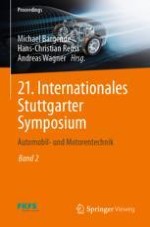2021 | OriginalPaper | Chapter
The Increasing Importance of Particles, Volatile Organic Compounds and Ammonia in Future Emissions Regulation
Authors : Nick Molden, James Hobday
Published in: 21. Internationales Stuttgarter Symposium
Publisher: Springer Fachmedien Wiesbaden
Activate our intelligent search to find suitable subject content or patents.
Select sections of text to find matching patents with Artificial Intelligence. powered by
Select sections of text to find additional relevant content using AI-assisted search. powered by
Abstract
-
Post-Euro-6 emissions regulation in Europe is an opportunity to simplify and refocus on emerging environment threats.
-
Certain unregulated tailpipe pollutants, such as ammonia, which contributes to secondary particle formation, are candidates for future regulation.
-
Volatile organic compounds are of interest from several angles: vehicle interior air quality and the off-gassing from materials; tailpipe speciation of hydrocarbons including formaldehyde; and off-gassing from tyres.
-
Tyre wear emissions are currently unregulated but are believed to be a growing contributor to air and marine pollution.
-
Emissions Analytics runs independent test programmes that investigate and quantify real-world exhaust, cabin and tyre pollution. Resulting measurements form the EQUA Index database, which is the source of results presented in this paper.
